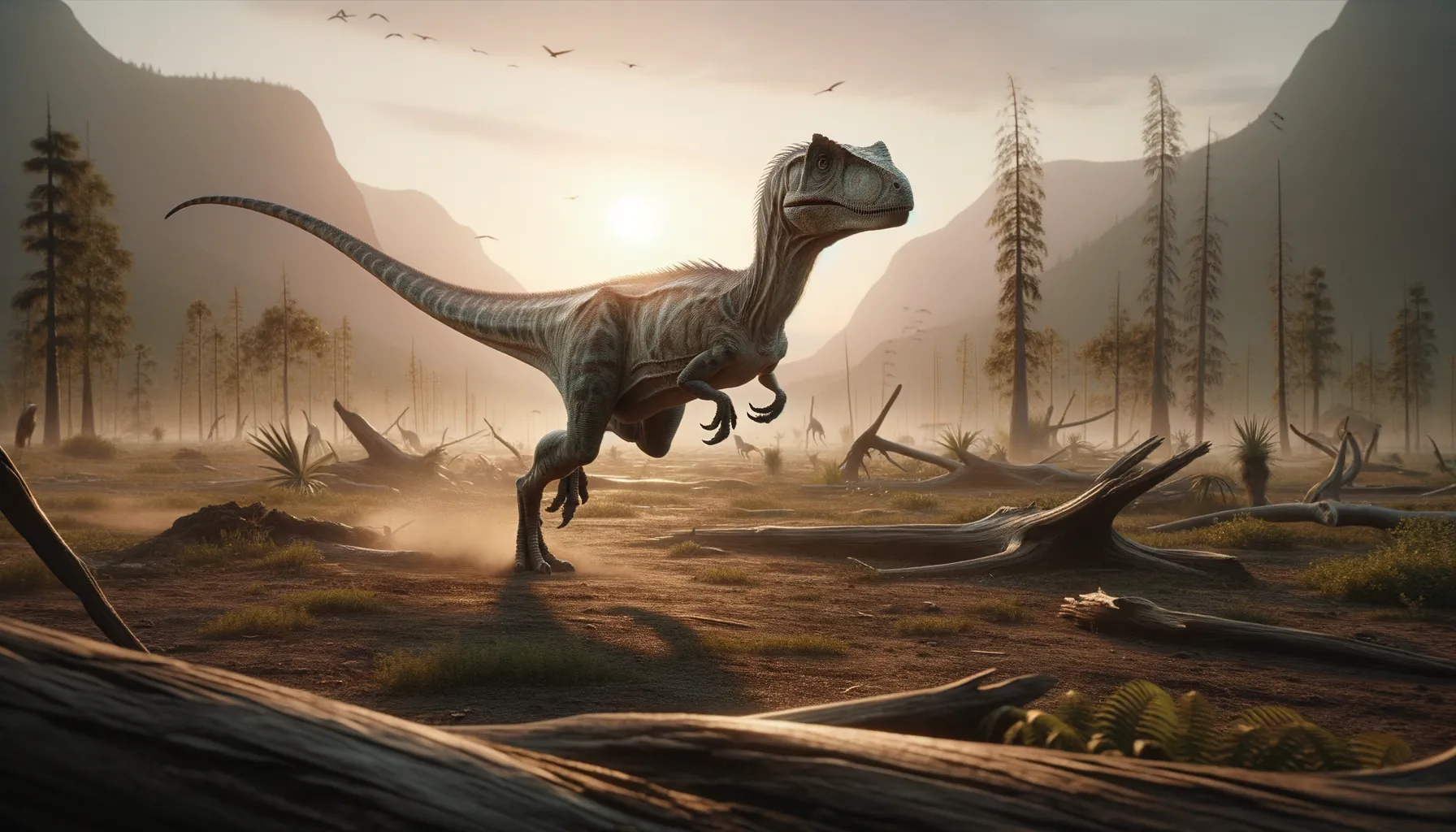
Lingyuanosaurus
Swift hunter of ancient lands.
Period
Cretaceous
Length
Roughly 2 meters long.
Height
About 1 meter tall at the hip.
Weight
Approximately 30 to 40 kilograms.
Lingyuanosaurus was a small theropod dinosaur that lived during the Early Cretaceous period. Its lean and agile body was well-suited for a life of quick sprints and sharp turns. This dinosaur has provided valuable insights into the evolutionary transition of small theropods in the region, showcasing adaptations that hint at the diverse ecological roles these creatures played. Fossils have been crucial in understanding its place within the dinosaur family tree.
Diet
Lingyuanosaurus primarily fed on small animals and insects. Its diet may have included small vertebrates and possibly plants as a supplement. Being an opportunistic feeder, it adapted its eating habits to the resources available in its environment.
Hunting
Lingyuanosaurus utilized its speed and agility to chase down prey. It likely relied on a combination of stealth and quick bursts of speed to catch smaller, faster animals. Group hunting behavior has not been documented, suggesting it was a solitary hunter.
Environmental challenges
Lingyuanosaurus faced numerous challenges, such as surviving in a highly competitive ecosystem with limited resources. Its small size made it vulnerable to larger predators, requiring constant vigilance. Extreme weather conditions of the Cretaceous period, including variations in temperature and humidity, also posed survival challenges. These dinosaurs needed to adapt quickly to the changing availability of food and water.
Speed
Moderately fast runner.
Lifespan
Around 10 to 15 years.
First discovery
Found in China in the early 21st century.
Fun Facts
- Lingyuanosaurus is a newly discovered dinosaur, adding to the exciting recent finds in paleontology.
- This dinosaur lived during the Early Cretaceous period, which was around 130 million years ago.
- Lingyuanosaurus was a theropod, meaning it walked on two legs and was likely carnivorous.
- Its fossils were discovered in the Liaoning Province of China, an area known for its rich prehistoric finds.
- The name 'Lingyuanosaurus' comes from the city of Lingyuan, near where the fossils were found.
- Lingyuanosaurus adds valuable insight into the diversity and evolution of early theropod dinosaurs.
- The discovery of Lingyuanosaurus helps scientists understand more about the ecosystems of the Early Cretaceous period.
Growth and Development
Lingyuanosaurus grew rapidly in its early years to escape predation. This fast growth allowed it to reach maturity quicker, reducing the time it risked predation as a juvenile. The development stages were marked by changes in bone structure and muscle mass, facilitating enhanced speed and agility. The fossil record suggests a consistent but not prolonged period of osteogenesis.
Habitat
Lingyuanosaurus inhabited forested areas and open plains. The diversity of environments provided ample hunting grounds and nesting sites. Proximity to water sources would have been crucial for their survival, influencing their choice of habitat. Fossil evidence indicates an affinity for forest edge habitats, which offered both cover and hunting opportunities.
Interaction with other species
Lingyuanosaurus likely competed with other small theropods for food. Its interactions with other species were minimal due to its solitary nature. It may have occasionally encountered larger herbivores, which posed little threat unless threatened. Fossil evidence shows minimal aggressive interaction marks, indicating relatively peaceful coexistence.
Natural lifespan
Lingyuanosaurus had a lifespan of approximately 10 to 15 years in the wild.
Reproduction
Reproduction involved laying small clutches of eggs in well-hidden nests. Parental care was probable, ensuring that the young were protected from predators until they reached a more self-sufficient stage. Hatchlings grew quickly, driven by the need to evade threats from larger predators. The commitment to egg-laying sites indicates a strategic choice for safety and survival of the species.
Social behaviour
Lingyuanosaurus exhibited primarily solitary behavior, relying on stealth and speed for survival. Social interactions were limited to the breeding season, where mate selection played a significant role. There is little evidence of pack or herd behavior, indicating that most of its life was spent fending for itself. Communication would have been rudimentary, involving simple vocalizations or visual displays.
Fossil locations
Fossils of Lingyuanosaurus have been predominantly found in China, specifically in Liaoning Province. This region is known for its rich array of Cretaceous fossils, providing a window into the diverse ecosystems of the time. The fossil sites have been invaluable in piecing together the habits and habitats of this agile dinosaur. Future discoveries may continue to enhance understanding of its distribution and behavior.
